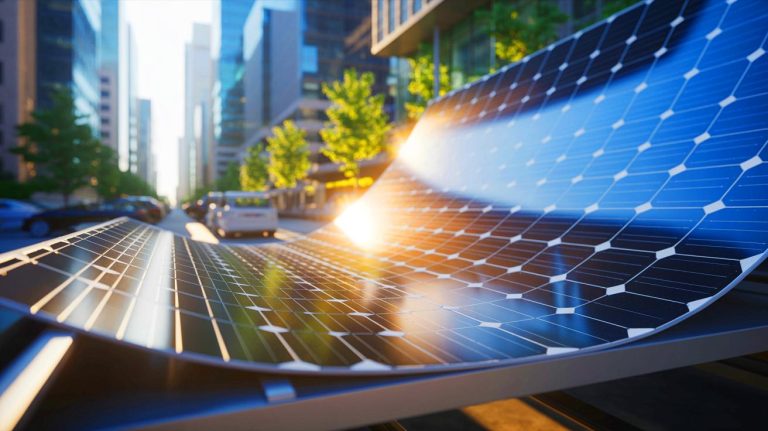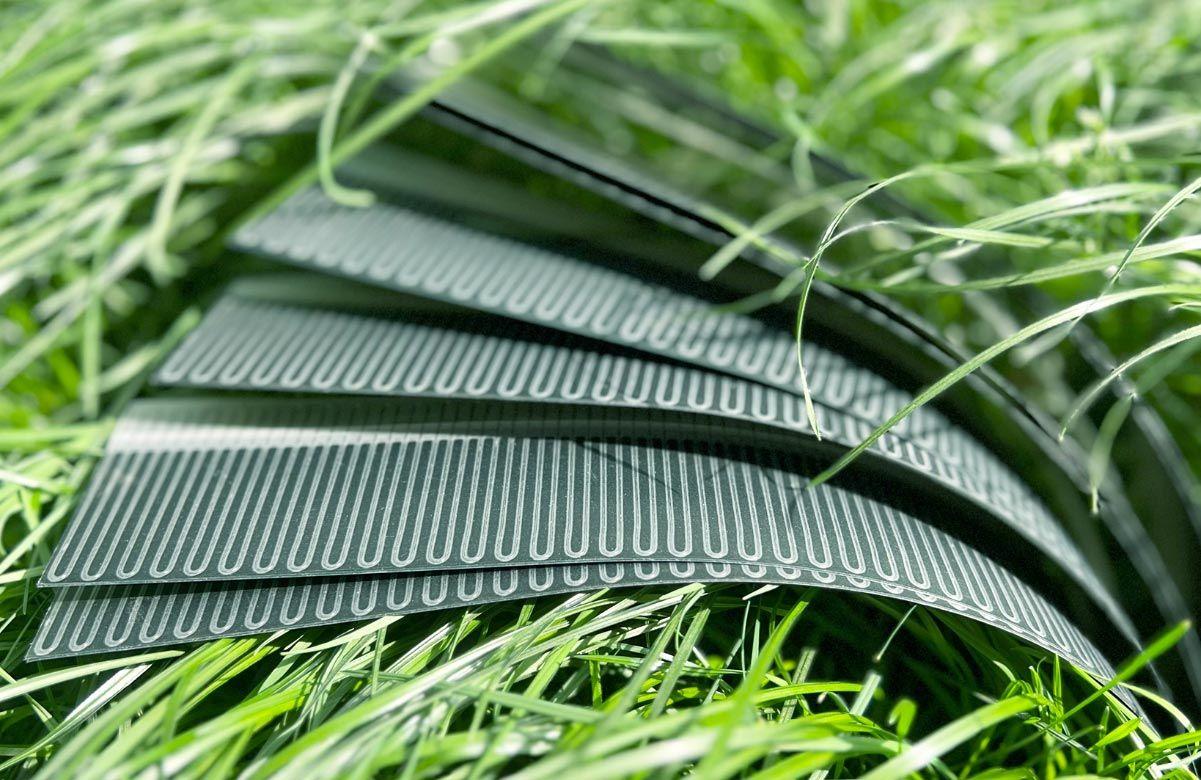| IN A NUTSHELL |
|
In a groundbreaking advancement, Chinese researchers have made significant strides in the development of flexible solar cells. By overcoming the longstanding challenge of the roughness of the CIGS layer, these scientists have devised an ingenious technique to create tandem solar cells that are both efficient and durable. Their innovative approach not only paves the way for lightweight and high-performance solar panels but also holds the potential to revolutionize the solar energy sector. The promising results of their study have been published in the esteemed journal, Nature Energy, marking a pivotal moment in solar technology.
The Breakthrough in Flexible Solar Cells
The team, led by Professor Jichun Ye, has introduced a novel strategy known as dissolution-adsorption, which employs two types of solvents to optimize the adhesion of layers. This method significantly enhances the crystallinity and adhesion of the perovskite layer. A notable achievement of their work is the creation of a flexible tandem solar cell measuring 0.42 square inches, achieving a record efficiency of 24.6%. Remarkably, this cell maintained over 90% of its initial performance after enduring 3,000 folds and 320 hours of operation, demonstrating exceptional robustness.
The implications of this advancement are profound, as it opens the door to commercial applications for flexible tandem solar cells. Such cells promise to offer solutions that are not only lightweight and efficient but also durable. The potential to transform the solar energy landscape is immense, with these innovations setting the stage for widespread adoption and implementation in various industries.
What Is Perovskite and Why Is It Used in Solar Cells?
Perovskite is a crystalline material that has revolutionized the field of solar cells due to its exceptional optical properties. Known for its high light absorption efficiency and low production cost, perovskite can convert a wide range of wavelengths into electricity, making it an ideal candidate for solar applications. Its structure can be modified to optimize performance, offering a significant advantage over traditional silicon-based solar cells.
Unlike conventional silicon, perovskite can be deposited as thin layers, enabling the creation of flexible and lightweight applications. However, long-term stability remains a challenge that researchers are working to overcome. The latest advancements, such as the integration of perovskite with materials like CIGS, demonstrate the potential for enhancing the durability of perovskite-based solar cells.
How Does a Tandem Solar Cell Work?
A tandem solar cell combines two different semiconductor materials to more effectively capture solar energy. Each material is optimized to absorb a specific portion of the solar spectrum, thereby increasing the overall conversion efficiency. In the case of perovskite/CIGS cells, perovskite primarily absorbs visible light, while CIGS is effective for infrared. This complementary absorption allows for a significant boost in efficiency.
The assembly of these materials into a single cell presents technical challenges, particularly regarding the adhesion between layers. Innovations like the antisolvant-seeding technique are crucial for overcoming these obstacles. Tandem cells represent the future of solar panels, with efficiencies potentially far surpassing current technologies. Their development is a critical component of the ongoing energy transition.
Potential Impact on the Solar Energy Industry
The development of flexible tandem solar cells has the potential to transform the solar energy industry significantly. With their lightweight and durable nature, these cells could be integrated into various applications, from portable electronics to building-integrated photovoltaics. Their high efficiency and flexibility make them particularly attractive for deployment in urban environments where traditional panels may not be feasible.
Moreover, the ability to produce these cells at a lower cost could accelerate the adoption of solar technology on a global scale. As the world continues to seek sustainable energy solutions, the advancements in flexible tandem cells could play a vital role in reducing reliance on fossil fuels and mitigating the impacts of climate change. The question remains: how quickly can these innovations be scaled to meet the growing demand for renewable energy sources?
Did you like it? 4.5/5 (27)









Wow, 24.6% efficiency in flexible solar cells is impressive! How soon can we expect to see these on the market? 🤔
Great article, but I’m curious how long the lifespan of these flexible cells is compared to rigid ones. 🤔
Why didn’t they develop something like this sooner? Seems like a no-brainer! 😜
Do these flexible cells work the same way as regular panels, or do they have unique installation requirements?
The future of solar energy looks bright with these innovations. Can’t wait to see what comes next! ☀️
I’m not convinced. How stable are these perovskite materials over time?
Thank you for this article! It’s great to see advancements in solar technology. 🌞
Can these flexible solar cells be used in wearable tech? That’d be awesome! 🏃♂️🔋
I’m curious about the environmental impact of producing these perovskite layers. Any insights?
With such high efficiency, could this tech replace rooftop solar panels entirely?
How does the dissolution-adsorption method work exactly? Sounds complicated!
Love this article! Can you provide more examples of commercial applications for these cells?
As exciting as this sounds, how will these advancements affect the current solar market?
Flexible solar cells that maintain efficiency even after being folded 3,000 times? Sounds like magic! ✨
I’m skeptical. Can these flexible solar cells really maintain their performance in harsh weather conditions? 🌧️
What’s next for this research team? Are they working on even higher efficiency rates? 📈
Great read, but what’s the durability like in extreme temperatures? 🥵🥶
These flexible solar cells sound like a game-changer. How soon can we expect them to be affordable? 💰
Is there any risk of these cells degrading faster than traditional panels? 🤷♂️
Thank you for covering this topic! I learned so much about solar technology today. 🙏
How does the efficiency of these flexible cells compare to the best rigid solar panels out there?
Do you think these flexible cells could be used in space applications? 🛰️
Incredible stuff! I would love to know more about the researchers behind this breakthrough. 😊
This is incredible news! Thanks for sharing such an informative article. 🌟